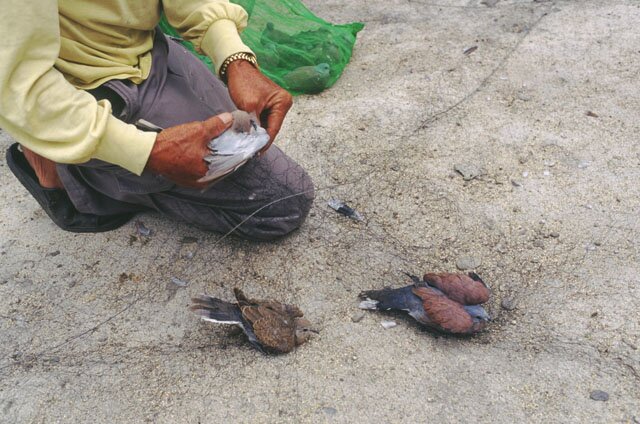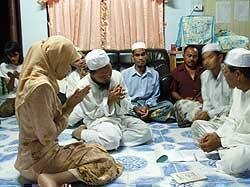BROWSE COUNTRIES/ TERRITORIES
Capturing the spirit
Esprit, the child of hippie culture, was born of two chance encounters.
The first was in 1964, when aspiring San Francisco fashion designer Susie Russell slowed down her car to pick up a hitchhiker near Lake Tahoe, California. Douglas Tompkins was a ski bum aiming for the Olympics. It was love at first sight and the couple tied the knot six months later. They were both 21.
America was in the throes of the Vietnam War and the flower movement. The Tompkins buckled down to work in true Californian style—Susie started a dress making business, using the boot of her car as a mobile showroom; Doug set up a ski equipment concern which he named The North Face. After a few years he sold it to help his wife focus on making laid-back, classy clothing for youth. The business boomed. In the early 1970s, it had evolved into Esprit de Corp, with seven lines of products, each with its own labels.
In 1971, the Tompkins met a Hong Kong Chinese a few years younger than them. It was the second encounter. Michael Ying was sent by Cathay Pacific Airways to run the California office because he spoke fluent English, a rarity among Hongkongers those days. They hit it off immediately. Soon Ying returned to Hong Kong and started a garment manufacturing business, with the Tompkins as a major customer.
In 1974, the three set up Esprit Far East, with the Tompkins holding two third of the shares and Ying one third.
Through Ying, Esprit outsourced most of its manufacturing to Hong Kong, then to China. In 1979, the Tompkins took a bold step and employed famed photographer John Casado to design an identity for the growing company. The famous Esprit stencil effect logo was created. Despite initial worries that the triple-bar “E” would not be legible to customers, the logo quickly became one of the most recognised fashion labels internationally.
Low cost, good design and distinctive identity helped to boost revenue to US$1 billion in the 1980s. Meanwhile Esprit was conquering Canada, Chile, and Switzerland and, urged by Ying, Asia. It was an immediate success with the newly affluent Asians. In Singapore sales broke $6 million (about US$3.5 million) in the first year, a record for the city state.
The Tompkins became rich. So did Ying. Their near seamless cooperation was famous in the rag trade. “Susie and Doug are the epitome of the hippie culture. They are kind, sincere, idealistic and artistic. In our 20 years of partnership we never had a serious dispute,” Ying once said.
But Doug and Susie had disputes. The couple divorced in 1989 or ’90. Susie led a leveraged buyout and took control of Esprit, meanwhile landing the company in heavy debt. Doug left in 1991. For five years Susie ran Esprit increasingly into the ground. In 1996 she sold the holding company, Esprit Holdings, to a group of investors including Oaktree Capital Management, Cerberus Partners and Jay Margolis, a veteran from Tommy Hilfiger. It did not help. Deprived of the creative input of the Tompkins, Esprit became rudderless. It went through one management change after another, which eventually led to the removal of Margolis as chairman. Meanwhile Michael Ying sat quietly in Hong Kong, biding his time.
Esprit Far East was listed in Hong Kong in 1983, with Ying in full control. But the company was vulnerable. It did a booming trade making Esprit clothing, but it did not own the brands. Brand ownership was vested in Esprit Holdings in the US. Ying did all he could to diversify Esprit Far East, including buying cosmetic and skin care concern Red Earth in 2001. He also tried to buy Esprit Holdings, without success.
Everything changed after 9/11. With America reeling, Ying waded in and bought out everyone in Esprit Holdings at a low price in March 2002. He hollowed out the company, folding the brands into the Hong Kong company and letting go of all its physical assets. Esprit, an American icon, was moved to Hong Kong.
In three years, it moved again. Ying, with an eye to open up the European market, hired former management consultant and textile executive Heinz Jurgen Krogner-Kornalik as CEO in 1995. Corporate headquarters was moved to Germany, the hometown of Krogner, while finance and intellectual property remained with Ying in Hong Kong. Under Heinz Krogner, Germany became Esprit’s biggest market. It also expanded into related areas. What started as a clothing shop has become a one-stop style source offering accessories, jewellery, beauty products, hair grooming and even household ware. Esprit is now the fifth largest fashion retailer in the world, with outlets in dozens of countries. It raked in HK$23.3 billion (US$3 billion) in revenue in its last financial year.
In September this year Ying announced his retirement. He will step down in December, to become a non-executive director. Krogner would succeed him as chairman. Ying has been selling down his shares, raising nearly US$2 billion. He now owns less than 9% of Esprit. Much of the company’s shares are in the hands of the funds. Esprit, the hippie company, has been institutionalised.
But the hippie culture lives on in its founders. Doug and Susie may have gone their separate ways—at one point they only talked to each other via lawyers over the dispute of a tax reimbursement—but they are still living out their 1960s ideals. Doug moved from the US to Chile, where he faced down immense opposition including threats from the ruling generals to acquire 70,000 hectares (175,000 acres) of land for wildlife sanctuaries and the protection of the rainforest. Together with his second wife, Kristine, former CEO of the outdoor clothing retailer Patagonia, he is now fighting efforts by Spanish utilities Endesa SA to build a set of US$4 billion hydroelectric dams in the area.
Susie runs the Susie Tompkins Buell Foundation, which she started as the Esprit Foundation in 1990 and renamed after she went through an acrimonious lawsuit with Esprit under Jay Margolis. There was no mention of who Buell was. The foundation helps AIDS victims and runaway youths and champions women’s causes. With money made from Esprit, Susie became a major Democrat donor and dabbled in politics. In the mid-1990s, she was interrogated by the FBI in relation to dubious campaign finance practices when her name was found on the phone list of then US President Bill Clinton. She was not charged.
Related Stories:
Login or Register
 Lee Han Shih is the founder, publisher and editor of asia! Magazine.
Lee Han Shih is the founder, publisher and editor of asia! Magazine.
- Asian Dynasties and History
- Conservation of the Environment
- Definition: Culture
- Economy and Economics
- Food and Recipe
- Geopolitics and Strategic Relations
- Health and Body
- Of Government and Politics
- Religion and Practices
- Social Injustices and Poverty Report
- Society, Class and Division
- Unrest, Conflicts and Wars

































 Another Point
Another Point From Jerusalem to the West Bank
From Jerusalem to the West Bank
Comments
Post new comment